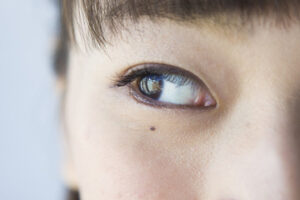2021/03/01
We have increased inquiries about moles.
- mole, Mole removal, Petite shaping, Mole, mole removal, Mole removal, Laser treatment, Plastic surgery, Carbon dioxide laser, Pathological diagnosis, Skin tumor, Cosmetic Surgery, Cosmetic surgeon, Cosmetic Surgery Society, cosmetic surgery, Cosmetic dermatology, Kuroko, Kuroko-tori, Mole removal

Reading Time: <1 minuteAs the new coronavirus infection spread, people began covering their faces with masks, leaving only the eyes exposed.Many companies require employees to wear masks indoors.Currently, the number of patients undergoing mole removal is rapidly increasing.Carbon dioxide laser treatment is famous for the removal of moles, but at our clinic, we use heat ablation treatment using electronic energy or thulium laser (Lavieen), which leaves fewer scars and can be removed reliably in a short time compared to carbon dioxide laser. We recommend tissue ablation treatment.
>>About mole removal
All-you-can-remove moles are carried out for a fixed fee.At medical institutions, removal using a carbon dioxide laser is common, but there is a possibility that a very noticeable hypertrophic scar will remain, so careful consideration is required.There are many patients who come to our clinic for consultation regarding hypertrophic scars that have been caused by moles being removed using carbon dioxide laser. CO₂ or carbon dioxide laser mole removal is called his laser and has a cutting-edge image, but it has been used clinically for over 25 years.In a sense, it is an old-fashioned treatment that carefully removes moles and is not necessarily recommended as the first choice.In fact, more than XNUMX years ago, I used a domestically produced carbon dioxide laser system developed by Japan Infrared Industry Co., Ltd. (Neek), which was sold at a list price of about XNUMX million yen at the time, to remove moles.When I started working as a cosmetic surgeon, the basic treatment for mole removal was excision, so the carbon dioxide laser system, which allows moles to evaporate and disappear simply by irradiating them with a laser beam, was revolutionary and magical. It looked like a piece of equipment.Scars are less noticeable than open surgery, and over XNUMX years ago, scar healing was not as much of a problem.There was a time when patients who underwent laser treatment were satisfied as long as the size and color of their moles improved.However, now that there are systems that can remove it more cleanly, the issue of scars such as hypertrophic scars caused by carbon dioxide laser removal has come into focus.I am also reluctant to continue using the same treatment method I used XNUMX years ago.Currently, raised moles are mainly removed using a treatment method that evaporates the mole tissue using heat generated by radio frequency electronic energy.For flat moles, laser irradiation with a medium called thulium is used to vaporize and remove the tissue.Moles are diagnosed using a device called dermoscopy.If malignancy is suspected, the affected area must be removed by excision or hollowing out and pathological examination performed to confirm the diagnosis.For tumors that have been definitively diagnosed as benign, we do not remove only the mole, but choose ablation with electronic energy or treatment with thulium laser.Aftercare involves applying a medical sticker for several days and applying moist therapy, without disinfecting the affected area.Disinfecting wounds can delay wound healing and increase the risk of infection due to tissue damage caused by disinfectants.The most common reason to remove a mole is for aesthetic purposes, but there are also cases where fortune telling recommends removal, or when there are symptoms such as itching or pain.Mole removal does not mean that all scars will heal in the same way and become less noticeable.Depending on the area of the body, the scar may bulge and become a hypertrophic scar, so careful consideration is required before surgery.On the face, scars are most likely to be visible around the mouth, lower jaw, and above the cheekbones.On the body, scars tend to be more noticeable on the shoulders, over the deltoid muscles, and over the sternum, and the reason for this is that the skin is so tense that it constantly pulls on the surrounding areas.Particularly in these areas, there are many cases where the scar heals as a white bulge called a hypertrophic scar.Depending on the location, excision surgery can also cure the mole with almost no scarring, so if the mole is too large, surgery may be necessary.It is difficult to remove the tip of the nose because there is cartilage just below it, so treatment methods other than removal must be selected.Mole removal is not a difficult cosmetic surgery procedure, but there are many points to be careful of, such as post-operative care and selection of the surgical site. We recommend that you take it.
contact@sakae-clinic.com
phone:0120566680



